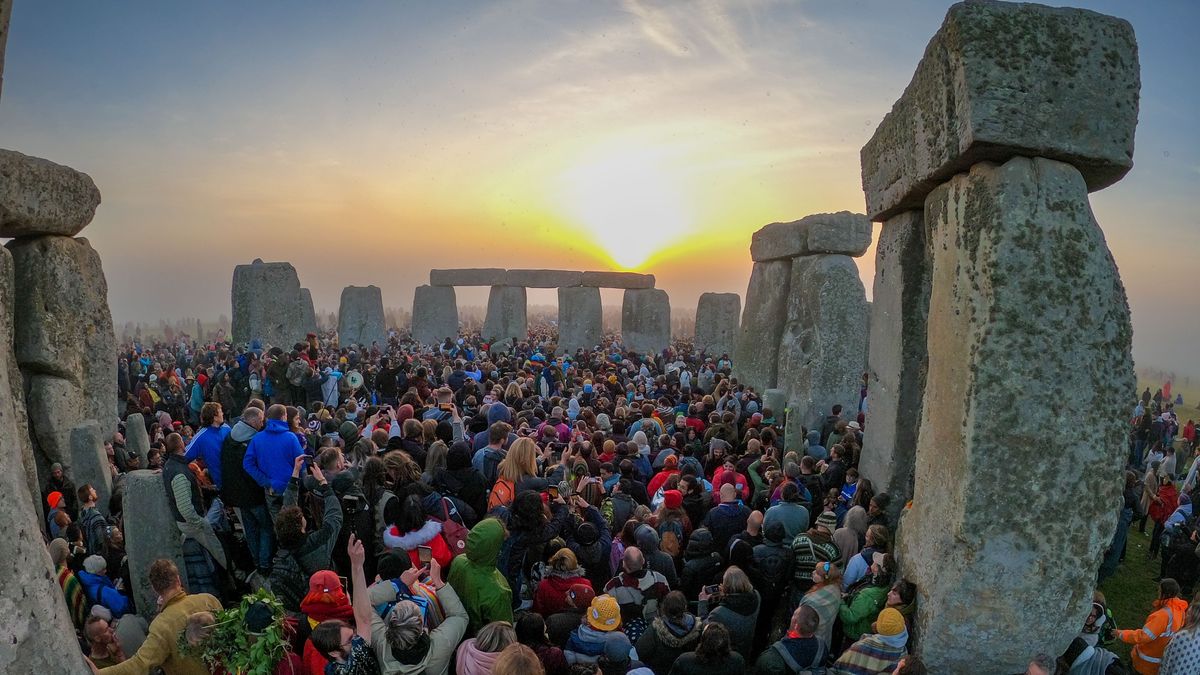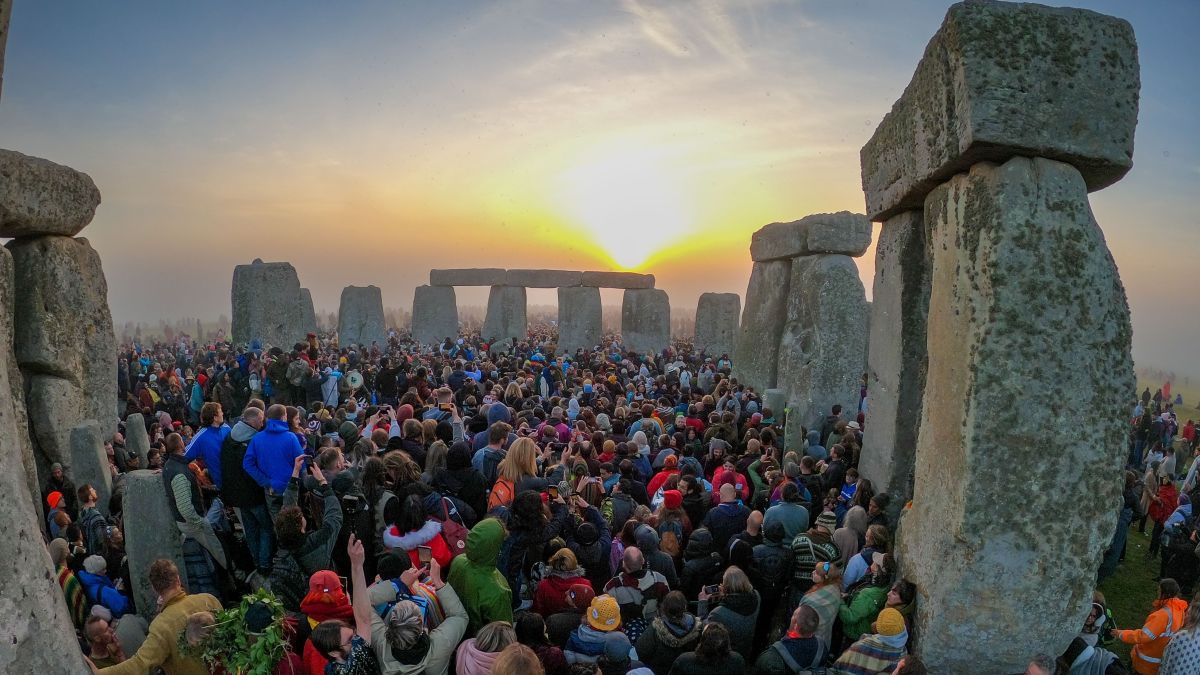
People around the world celebrated the summer solstice today (June 21), as did some satellites in space.
The June solstice (or summer solstice) in the Northern Hemisphere sees the sun reach its highest and northernmost point in the sky, providing maximum daylight hours. The Southern Hemisphere gets the opposite effect as winter begins.
Solstice watchers at Britain’s Stonehenge (opens in new tab), a monument built thousands of years ago, perhaps to track solstice events, were among people around the world celebrating the moment summer came at 5:14 a.m. EDT (0914 GMT), as you can see in the picture above.
From space, the European Space Agency’s Meteosat captured our planet just hours before the official moment of solstice came. Meteosat monitors the weather, climate and the environment of Earth from space.
Related: The brightest planets in June’s night sky: How to see them (and when)
Happy #solstice! 🌞Today in the Northern Hemisphere we experience the longest day and shortest night of the year. This image from Meteosat shows our planet at 06:00 UTC this morning, and summer officially began today at 09:13 UTC / 11:13 CEST! @eumetsat #SummerSolstice pic.twitter.com/DypdchHNW6June 21, 2022
Skywatchers around the world also took a few moments to reflect on the sun, its place in our universe and the solstice’s importance in their own lives. Some gathered at large monuments to celebrate, while others had more personal touches such as going out to sea solo to see the rising sun.
Happy Midsummer Day.Summer solstice; Latin “sol” & “stitium”—stilled sun.Hinge of the year, turn of light’s tide; northern day of longest light & shortest shadow.I always feel a slight slump in the spirit, knowing the darkness rises from here. You too?📸 charloisporto pic.twitter.com/Jmih3Dy2kGJune 21, 2022
A few from this mornings Solstice celebrations on Glastonbury Tor. Happy solstice everyone. Now off to the festival. 🥳🎉🍾#summersolstice #LongestDay #glastonburytor pic.twitter.com/g9wYQaWivpJune 21, 2022
Happy Solstice!My 70 year old mother got up at 3.30am to row out to sea and take this photo. One day, once I am no longer entirely responsible for two small humans, I will manage to get up and see it too but not this year. pic.twitter.com/yDY8gZ7DvNJune 21, 2022
The summer solstice sun rises over Liverpool. #Solstice #SummerSolstice2022 #StormHour pic.twitter.com/w2cuKHJjPYJune 21, 2022
In June, the northern half of Earth is tilted toward the sun, with the Northern Hemisphere receiving the most direct angle of sunlight during the solstice.
To see how many hours of daylight you receive on solstice day, you can use The Farmer’s Almanac Sunrise and Sunset Calculator (opens in new tab).
If you want to catch the sun for yourself using skywatching gear, you can get some help for safe solar observing with guides such as how to photograph a solar eclipse safely. Our guides on the best cameras for astrophotography and the best lenses for astrophotography can also help you find the camera gear you need to capture your own snapshots.
Follow Elizabeth Howell on Twitter @howellspace (opens in new tab). Follow us on Twitter @Spacedotcom (opens in new tab) and on Facebook (opens in new tab).



